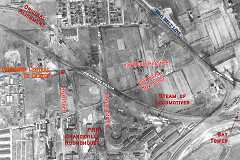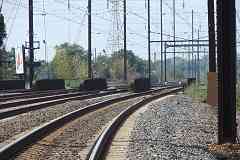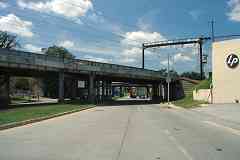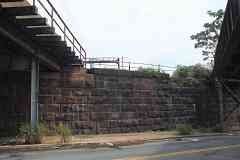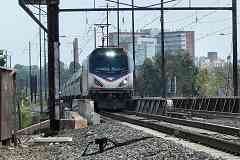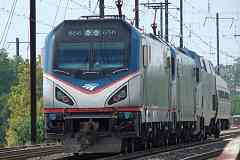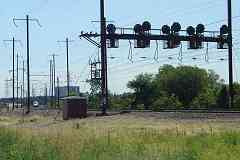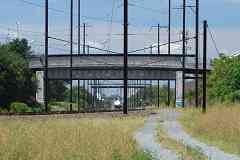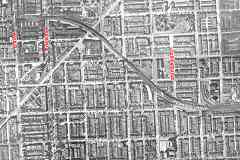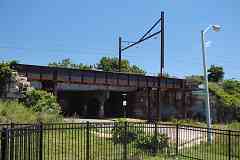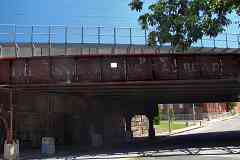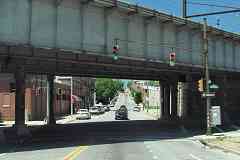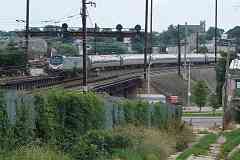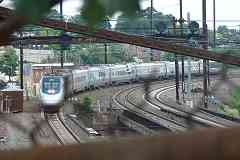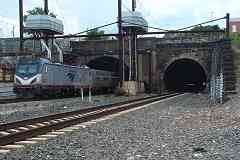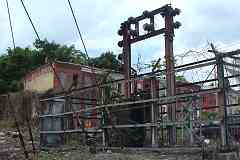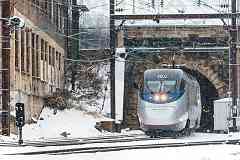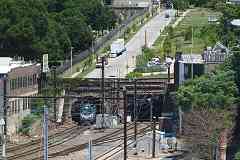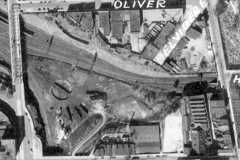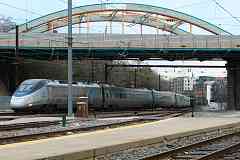|
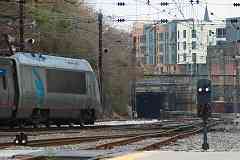 After emerging from Union Tunnel, as seen from track level this
southbound is rolling under Guilford Avenue, and slowing to stop
at Penn Station.
After emerging from Union Tunnel, as seen from track level this
southbound is rolling under Guilford Avenue, and slowing to stop
at Penn Station.
As the train clears, the second tunnel's south portal becomes visible in the
distance; "1934" is embossed above the portal. Unlike the north portal, for
reasons unknown, this opening is rectangular. In the foreground are two types
of PRR signals, a dwarf and a pedestal, both still in service.
Links:
1912,
~1920,
1959,
1978,
1980,
1983,
MARC 7853 in 2012,
2013,
2017
|
